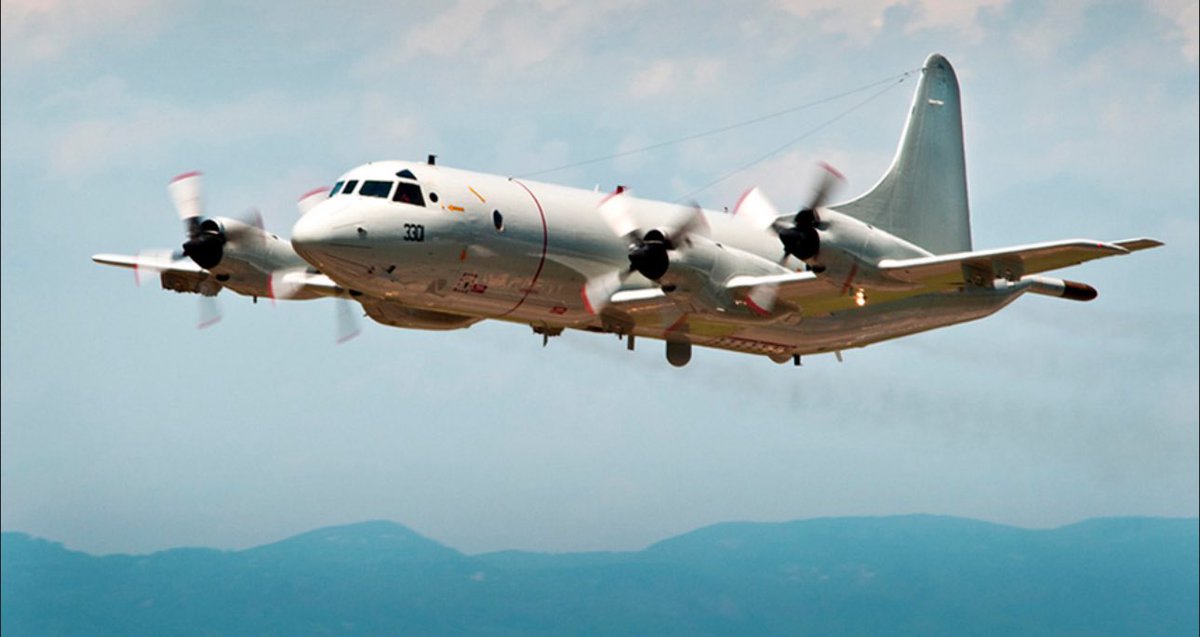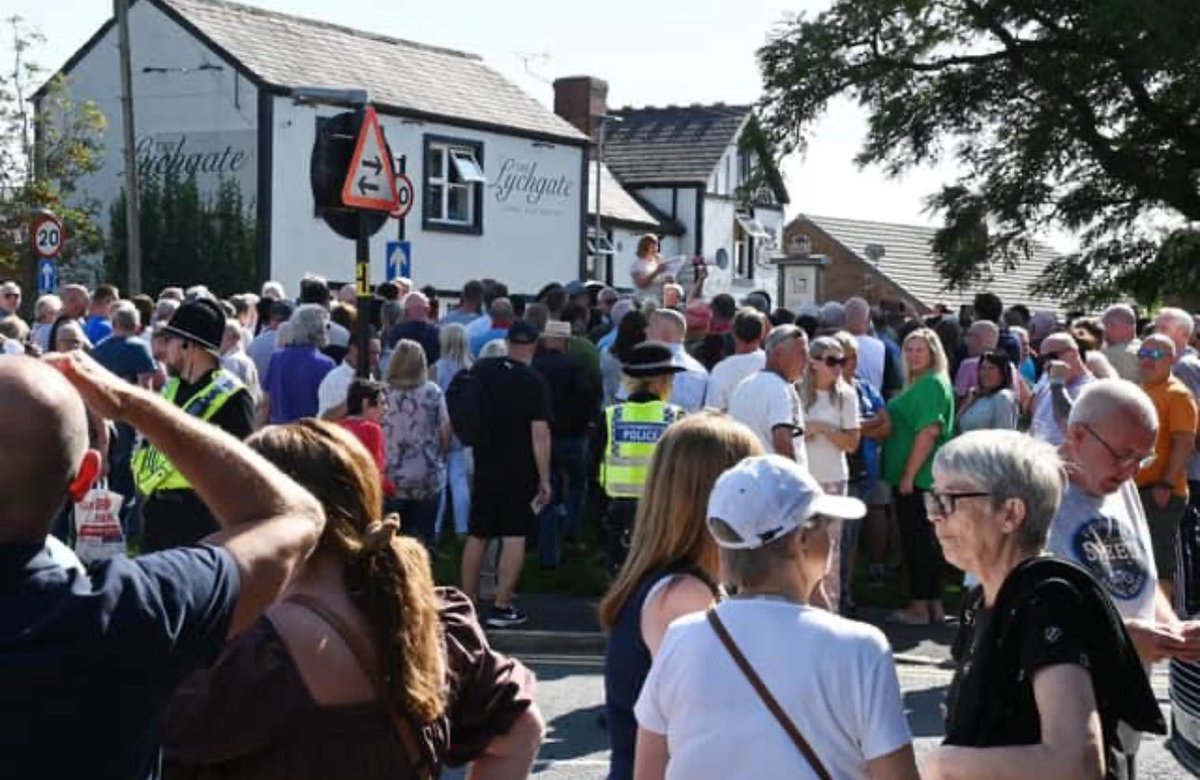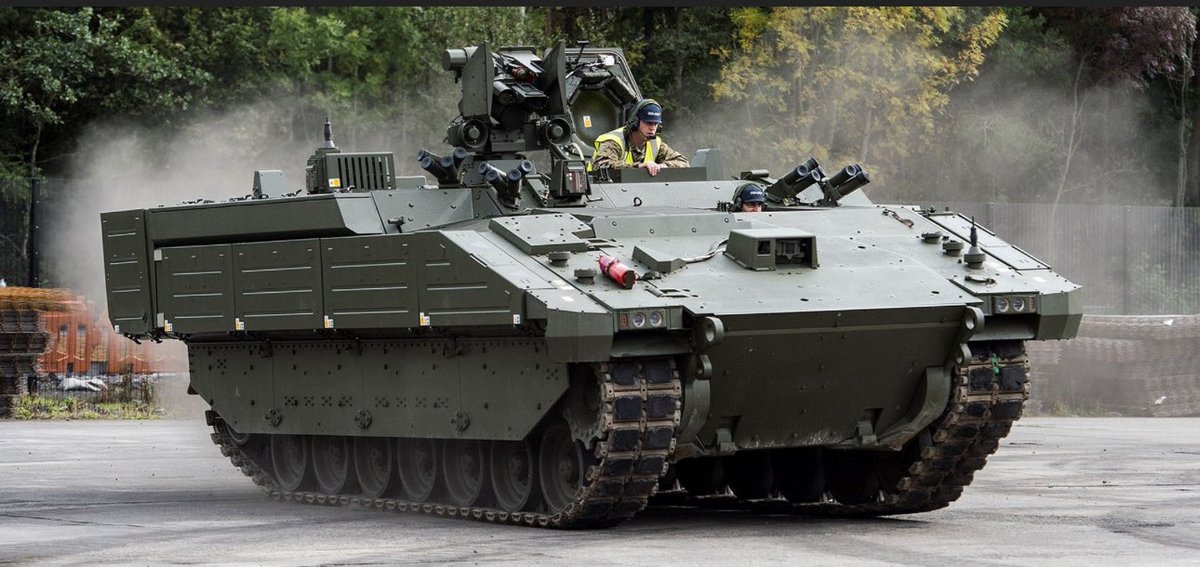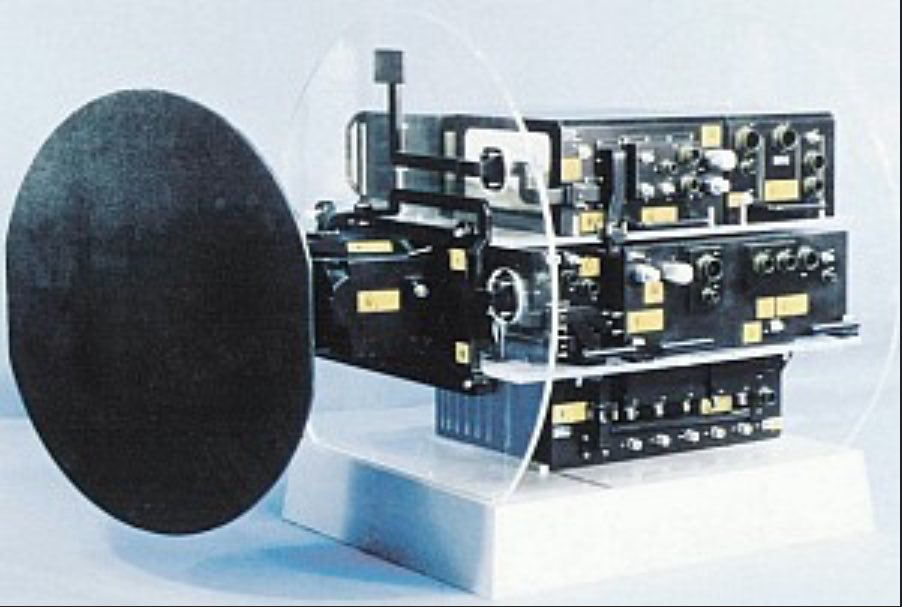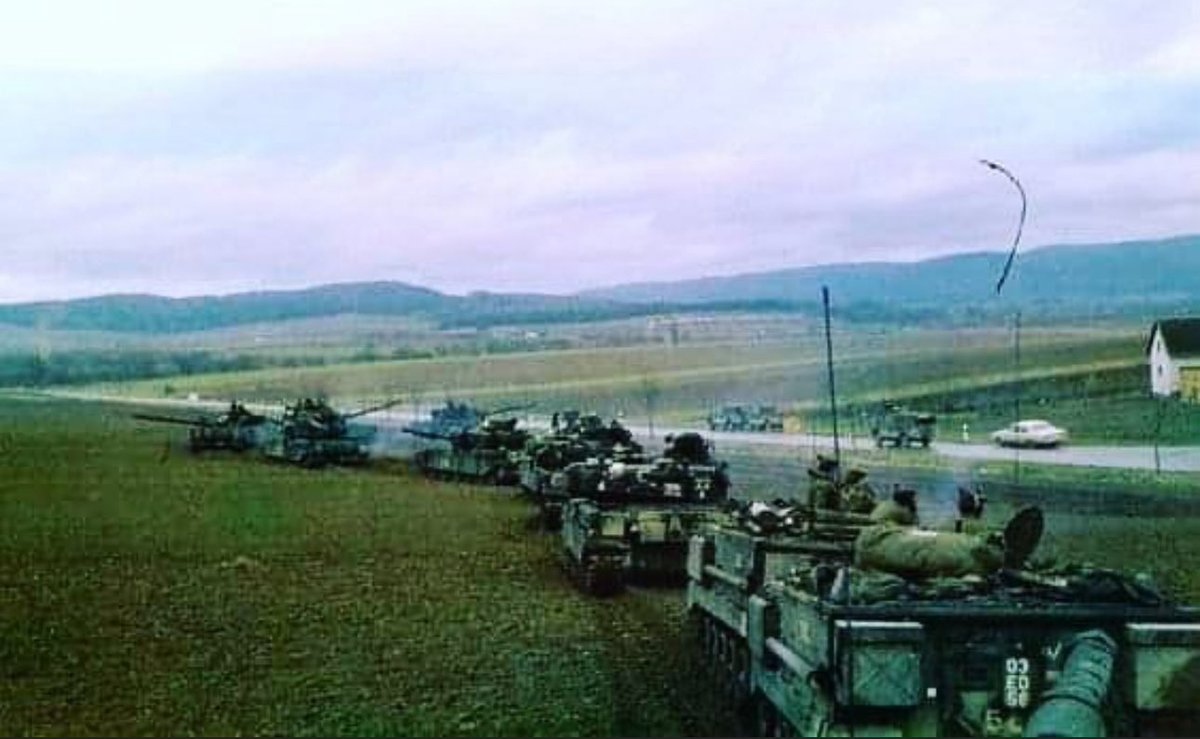Introduction to the AN/APS-154 Advanced Airborne Sensor
Following the recent Red Sea “interception” of a P-8 and my thread on the system (the airframe is just the platform that gets the sensor where it needs to be) I thought it would be useful to describe what the “sensor” was clipped to the fuselage.
As always, views my own and facts can be corrected. @Raytheon_UK
1/25 The AN/APS-154 Advanced Airborne Sensor (AAS) is a state-of-the-art multifunction radar developed by Raytheon (now RTX Corporation) for the United States Navy’s P-8A Poseidon maritime patrol aircraft. Designed for intelligence, surveillance, reconnaissance, and targeting (ISR&T), the AAS represents a significant advancement in airborne radar technology. This thread attempts to follow its development from conceptualisation to operational deployment, elucidates its functionality, and examines its integration with the P-8A.
Furthermore, it explores opportunities for the United Kingdom and NATO allies—Canada, Norway, and Germany—to enhance their P-8 fleets, addressing capability gaps such as those left by the we retired Sentinel R1 and soon the Shadow R1, and concludes by highlighting its role as a force multiplier.
Following the recent Red Sea “interception” of a P-8 and my thread on the system (the airframe is just the platform that gets the sensor where it needs to be) I thought it would be useful to describe what the “sensor” was clipped to the fuselage.
As always, views my own and facts can be corrected. @Raytheon_UK
1/25 The AN/APS-154 Advanced Airborne Sensor (AAS) is a state-of-the-art multifunction radar developed by Raytheon (now RTX Corporation) for the United States Navy’s P-8A Poseidon maritime patrol aircraft. Designed for intelligence, surveillance, reconnaissance, and targeting (ISR&T), the AAS represents a significant advancement in airborne radar technology. This thread attempts to follow its development from conceptualisation to operational deployment, elucidates its functionality, and examines its integration with the P-8A.
Furthermore, it explores opportunities for the United Kingdom and NATO allies—Canada, Norway, and Germany—to enhance their P-8 fleets, addressing capability gaps such as those left by the we retired Sentinel R1 and soon the Shadow R1, and concludes by highlighting its role as a force multiplier.

Conceptual Origins of the AAS
2/25 The AAS was conceived in the late 2000s to counter evolving threats in littoral and maritime environments, where traditional radars struggled to detect low radar cross-section (RCS) targets, such as stealthy vessels, low-flying drones, or submerged submarines. Building on the classified AN/APS-149 Littoral Surveillance Radar System (LSRS), deployed on select P-3C Orion aircraft, the AAS aimed to enhance multi-function capabilities like moving target indication (MTI) and high-resolution mapping, adapting them for modern asymmetric warfare.
2/25 The AAS was conceived in the late 2000s to counter evolving threats in littoral and maritime environments, where traditional radars struggled to detect low radar cross-section (RCS) targets, such as stealthy vessels, low-flying drones, or submerged submarines. Building on the classified AN/APS-149 Littoral Surveillance Radar System (LSRS), deployed on select P-3C Orion aircraft, the AAS aimed to enhance multi-function capabilities like moving target indication (MTI) and high-resolution mapping, adapting them for modern asymmetric warfare.
Defining Operational Requirements
3/25 The US Navy (USN) established rigorous requirements for the AAS, mandating all-weather, day-and-night operation independent of optical sensors. The system needed to provide near 360-degree coverage, simultaneous scanning, mapping, tracking, and target classification. It was also required to integrate with networked weapons for real-time targeting, serve as a communications relay, and support electronic warfare (EW) functions. Tailored for the P-8A Poseidon, the USN’s successor to the P-3C, the AAS was designed to operate effectively in contested environments, detecting subtle threats at extended ranges.
3/25 The US Navy (USN) established rigorous requirements for the AAS, mandating all-weather, day-and-night operation independent of optical sensors. The system needed to provide near 360-degree coverage, simultaneous scanning, mapping, tracking, and target classification. It was also required to integrate with networked weapons for real-time targeting, serve as a communications relay, and support electronic warfare (EW) functions. Tailored for the P-8A Poseidon, the USN’s successor to the P-3C, the AAS was designed to operate effectively in contested environments, detecting subtle threats at extended ranges.
Development Contract and Initial Milestones
4/25 On 31 July 2009, Raytheon was awarded a multi-year USN contract to develop the AAS as a direct successor to the LSRS. This contract marked the transition from concept to engineering, leveraging LSRS prototypes to expedite progress. Emphasis was placed on modularity for future upgrades and compatibility with the P-8A’s Boeing 737-based airframe, ensuring the radar could meet the USN’s need for enhanced situational awareness in complex operational theatres (like the Red Sea - as recently seen).
4/25 On 31 July 2009, Raytheon was awarded a multi-year USN contract to develop the AAS as a direct successor to the LSRS. This contract marked the transition from concept to engineering, leveraging LSRS prototypes to expedite progress. Emphasis was placed on modularity for future upgrades and compatibility with the P-8A’s Boeing 737-based airframe, ensuring the radar could meet the USN’s need for enhanced situational awareness in complex operational theatres (like the Red Sea - as recently seen).
Design Phase: Core Architecture
5/25 The AAS is designed around a double-sided active electronically scanned array (AESA) radar, housed in a pod mounted beneath the P-8A’s fuselage. The pod, deployed via a hydraulic arm, minimises aerodynamic drag when stowed, preserving the aircraft’s performance. The double-sided array provides near-omnidirectional coverage, a marked improvement over single-sided predecessors, enabling comprehensive surveillance without requiring aircraft manoeuvres to cover blind spots.
5/25 The AAS is designed around a double-sided active electronically scanned array (AESA) radar, housed in a pod mounted beneath the P-8A’s fuselage. The pod, deployed via a hydraulic arm, minimises aerodynamic drag when stowed, preserving the aircraft’s performance. The double-sided array provides near-omnidirectional coverage, a marked improvement over single-sided predecessors, enabling comprehensive surveillance without requiring aircraft manoeuvres to cover blind spots.

AESA Technology and Functionality
6/25 The AAS employs AESA technology, utilising thousands of transmit/receive modules to steer radar beams electronically, eliminating mechanical components. This enables rapid beam switching and multitasking, with beams adapting in real-time to prioritise search, tracking, or imaging tasks. The double-sided configuration—effectively two radars operating back-to-back—ensures continuous 360-degree surveillance, enhancing operational efficiency over earlier systems with limited fields of view.
6/25 The AAS employs AESA technology, utilising thousands of transmit/receive modules to steer radar beams electronically, eliminating mechanical components. This enables rapid beam switching and multitasking, with beams adapting in real-time to prioritise search, tracking, or imaging tasks. The double-sided configuration—effectively two radars operating back-to-back—ensures continuous 360-degree surveillance, enhancing operational efficiency over earlier systems with limited fields of view.

Operational Modes: MTI, SAR, and ISAR
7/25 The AAS integrates multiple operational modes for versatility. Moving Target Indication (MTI) filters stationary clutter to detect moving objects, such as vehicles or ships. Synthetic Aperture Radar (SAR) generates high-resolution images by simulating a large antenna through aircraft motion, enabling ground mapping through adverse weather. Inverse Synthetic Aperture Radar (ISAR) leverages target motion for detailed imaging, ideal for classifying maritime targets like periscopes or ship hulls. These modes operate concurrently, providing a comprehensive operational picture.
7/25 The AAS integrates multiple operational modes for versatility. Moving Target Indication (MTI) filters stationary clutter to detect moving objects, such as vehicles or ships. Synthetic Aperture Radar (SAR) generates high-resolution images by simulating a large antenna through aircraft motion, enabling ground mapping through adverse weather. Inverse Synthetic Aperture Radar (ISAR) leverages target motion for detailed imaging, ideal for classifying maritime targets like periscopes or ship hulls. These modes operate concurrently, providing a comprehensive operational picture.

Submarine Detection and Electronic Warfare Capabilities
8/25 A key feature is Mast and Periscope Detection (MPD), which identifies submarine snorkels or surface wakes at long ranges. The radar’s high sensitivity detects subtle disturbances caused by submerged vessels, enhancing anti-submarine warfare (ASW) capabilities. Additionally, the AAS supports EW by jamming or deceiving enemy sensors and functions as a data relay, linking with satellites or ground forces, positioning it as a critical node in networked operations.
8/25 A key feature is Mast and Periscope Detection (MPD), which identifies submarine snorkels or surface wakes at long ranges. The radar’s high sensitivity detects subtle disturbances caused by submerged vessels, enhancing anti-submarine warfare (ASW) capabilities. Additionally, the AAS supports EW by jamming or deceiving enemy sensors and functions as a data relay, linking with satellites or ground forces, positioning it as a critical node in networked operations.
Development and Prototyping Efforts
9/25 Following the 2009 contract, Raytheon accelerated development by building on LSRS hardware. Prototypes underwent extensive ground testing to refine signal processing and target discrimination algorithms. By 2015, integration with the P-8A commenced, focusing on compatibility with the aircraft’s avionics and mission systems to ensure seamless data fusion and operational reliability.
9/25 Following the 2009 contract, Raytheon accelerated development by building on LSRS hardware. Prototypes underwent extensive ground testing to refine signal processing and target discrimination algorithms. By 2015, integration with the P-8A commenced, focusing on compatibility with the aircraft’s avionics and mission systems to ensure seamless data fusion and operational reliability.
Build Phase and Technical Challenges
10/25 The build phase involved constructing the AESA arrays and pod structure, designed to withstand the rigours of high-altitude, long-endurance missions. Challenges included managing the pod’s substantial weight and ensuring electromagnetic compatibility with the P-8A’s avionics. Raytheon collaborated with Boeing to modify the fuselage mount, incorporating a hydraulic deployment mechanism to balance aerodynamic performance with operational flexibility.
10/25 The build phase involved constructing the AESA arrays and pod structure, designed to withstand the rigours of high-altitude, long-endurance missions. Challenges included managing the pod’s substantial weight and ensuring electromagnetic compatibility with the P-8A’s avionics. Raytheon collaborated with Boeing to modify the fuselage mount, incorporating a hydraulic deployment mechanism to balance aerodynamic performance with operational flexibility.
Testing and Operational Validation
11/25 A significant milestone was achieved on 20 May 2015, when the AAS-equipped P-8A completed its first flight at Naval Air Station Patuxent River, Maryland. Testing from 2015 to 2016 validated safe operation, MPD capabilities, and integration with other sensors. By 2020, the system reached operational readiness, with further tests confirming its ability to guide munitions like Tomahawk missiles. As of 2025, the AAS is fully deployed on select P-8As.
11/25 A significant milestone was achieved on 20 May 2015, when the AAS-equipped P-8A completed its first flight at Naval Air Station Patuxent River, Maryland. Testing from 2015 to 2016 validated safe operation, MPD capabilities, and integration with other sensors. By 2020, the system reached operational readiness, with further tests confirming its ability to guide munitions like Tomahawk missiles. As of 2025, the AAS is fully deployed on select P-8As.
Advantages Over the LSRS
12/25 Compared to its predecessor, the AN/APS-149 LSRS, the AAS offers superior resolution and processing power, enabling detection of low-RCS targets at greater distances. The double-sided AESA design eliminates the LSRS’s single-sided limitations, providing continuous surveillance without the need for aircraft repositioning, thus enhancing mission efficiency.
12/25 Compared to its predecessor, the AN/APS-149 LSRS, the AAS offers superior resolution and processing power, enabling detection of low-RCS targets at greater distances. The double-sided AESA design eliminates the LSRS’s single-sided limitations, providing continuous surveillance without the need for aircraft repositioning, thus enhancing mission efficiency.
Superiority Over JSTARS Radar
13/25 The AAS surpasses the AN/APY-7 radar on the E-8 JSTARS, particularly in its dual maritime and overland capabilities. Its sensitivity enables detection of submarine wakes and periscopes—functions beyond the JSTARS radar’s scope—while offering enhanced EW integration. The AAS’s modular design also facilitates rapid upgrades, ensuring adaptability to future threats.
13/25 The AAS surpasses the AN/APY-7 radar on the E-8 JSTARS, particularly in its dual maritime and overland capabilities. Its sensitivity enables detection of submarine wakes and periscopes—functions beyond the JSTARS radar’s scope—while offering enhanced EW integration. The AAS’s modular design also facilitates rapid upgrades, ensuring adaptability to future threats.
Technological Advancements
14/25 The AAS’s technological advantages include all-weather performance, high sensitivity (capable of detecting personnel formations), and real-time multitasking. Advanced algorithms and AESA technology reduce operator workload, enabling rapid threat identification and response, positioning the AAS as a significant improvement over earlier radar systems.
14/25 The AAS’s technological advantages include all-weather performance, high sensitivity (capable of detecting personnel formations), and real-time multitasking. Advanced algorithms and AESA technology reduce operator workload, enabling rapid threat identification and response, positioning the AAS as a significant improvement over earlier radar systems.
Integration with the P-8A Poseidon
15/25 The AAS integrates seamlessly with the P-8A, complementing its AN/APY-10 radar for ASW tasks. The pod deploys mid-flight, feeding data into the aircraft’s mission computers, where it fuses with inputs from sonobuoys, electro-optical sensors, and weapons systems. This integration creates a unified battlespace picture, enhancing the P-8A’s effectiveness in complex missions.
15/25 The AAS integrates seamlessly with the P-8A, complementing its AN/APY-10 radar for ASW tasks. The pod deploys mid-flight, feeding data into the aircraft’s mission computers, where it fuses with inputs from sonobuoys, electro-optical sensors, and weapons systems. This integration creates a unified battlespace picture, enhancing the P-8A’s effectiveness in complex missions.

Deployment Strategies
16/25 The AAS is deployed from USN bases, such as Jacksonville, Florida, or forward locations in the Indo-Pacific and Atlantic regions. Only a subset of P-8As is equipped with the AAS, allowing the fleet to tailor capabilities for specific ISR&T missions. This modular approach maximises resource efficiency while addressing diverse operational requirements.
16/25 The AAS is deployed from USN bases, such as Jacksonville, Florida, or forward locations in the Indo-Pacific and Atlantic regions. Only a subset of P-8As is equipped with the AAS, allowing the fleet to tailor capabilities for specific ISR&T missions. This modular approach maximises resource efficiency while addressing diverse operational requirements.

Operational Utilisation
17/25 In operational contexts, the AAS tracks surface and subsurface threats, supports strike planning, and enhances maritime domain awareness. Its standoff range ensures the P-8A remains safe from anti-air threats, while its data-link capabilities enable real-time targeting for munitions like Long-Range Anti-Ship Missiles (LRASM), strengthening naval operations.
17/25 In operational contexts, the AAS tracks surface and subsurface threats, supports strike planning, and enhances maritime domain awareness. Its standoff range ensures the P-8A remains safe from anti-air threats, while its data-link capabilities enable real-time targeting for munitions like Long-Range Anti-Ship Missiles (LRASM), strengthening naval operations.
Functionality of the AAS
18/25 The AAS operates by scanning vast areas with electronic beams, processed by AI-assisted algorithms to classify threats. MTI uses Doppler shifts to isolate moving targets amidst clutter. SAR and ISAR generate images with metre-level resolution, even through clouds. Operators access data via intuitive cockpit interfaces, selecting modes to align with mission priorities.
18/25 The AAS operates by scanning vast areas with electronic beams, processed by AI-assisted algorithms to classify threats. MTI uses Doppler shifts to isolate moving targets amidst clutter. SAR and ISAR generate images with metre-level resolution, even through clouds. Operators access data via intuitive cockpit interfaces, selecting modes to align with mission priorities.

Threat Detection Capabilities
19/25 The AAS excels at detecting low-flying drones, stealth vessels, and submarines by analysing wakes or emissions. In overland roles, it maps terrain, tracks convoys, and identifies threats like improvised explosive devices (IEDs). In maritime mode, ISAR classifies ships, aiding identification friend-or-foe decisions critical to naval engagements.
19/25 The AAS excels at detecting low-flying drones, stealth vessels, and submarines by analysing wakes or emissions. In overland roles, it maps terrain, tracks convoys, and identifies threats like improvised explosive devices (IEDs). In maritime mode, ISAR classifies ships, aiding identification friend-or-foe decisions critical to naval engagements.
Data Integration and Networked Operations
20/25 Integration with the P-8A enhances its role as a networked platform. AAS data flows through MIL-STD-1553 buses and Ethernet, merging with other sensors for automated targeting. This reduces latency, enabling real-time data sharing via Link 16 with allied forces, thereby strengthening coalition operations across NATO.
20/25 Integration with the P-8A enhances its role as a networked platform. AAS data flows through MIL-STD-1553 buses and Ethernet, merging with other sensors for automated targeting. This reduces latency, enabling real-time data sharing via Link 16 with allied forces, thereby strengthening coalition operations across NATO.

UK Opportunity: Replacing the Sentinel R1
21/25 The UK retired its Sentinel R1 fleet in March 2021 due to high maintenance costs and obsolescence (the official reason). With nine P-8 MRA1 aircraft in RAF service, equipping them with AAS pods could help address this capability gap. The AAS’s ground mapping and MTI functions replicate the Sentinel’s capabilities, offering a cost-effective ISR solution without requiring new aircraft.
21/25 The UK retired its Sentinel R1 fleet in March 2021 due to high maintenance costs and obsolescence (the official reason). With nine P-8 MRA1 aircraft in RAF service, equipping them with AAS pods could help address this capability gap. The AAS’s ground mapping and MTI functions replicate the Sentinel’s capabilities, offering a cost-effective ISR solution without requiring new aircraft.

Addressing the Shadow R1 Capability Gap
22/25 The Shadow R1, used for intelligence, surveillance, target acquisition, and reconnaissance (ISTAR) missions, also faces retirement (currently grounded, US contractors currently fulfilling role out of Cyprus). AAS-equipped P-8 MRA1s could provide persistent surveillance, leveraging the platform’s 10-hour endurance and speed (1200nm transit - 4 hrs on station). This approach avoids the cost of new UAVs, utilising existing RAF infrastructure for training and maintenance, thereby enhancing operational efficiency.

22/25 The Shadow R1, used for intelligence, surveillance, target acquisition, and reconnaissance (ISTAR) missions, also faces retirement (currently grounded, US contractors currently fulfilling role out of Cyprus). AAS-equipped P-8 MRA1s could provide persistent surveillance, leveraging the platform’s 10-hour endurance and speed (1200nm transit - 4 hrs on station). This approach avoids the cost of new UAVs, utilising existing RAF infrastructure for training and maintenance, thereby enhancing operational efficiency.


NATO Collaboration: Canada and Norway
23/25 Canada, transitioning from CP-140 Aurora aircraft to P-8s, could adopt the AAS for Arctic surveillance, addressing regional security needs. Norway, with P-8s operational since 2022, shares interests in North Atlantic maritime security (Just look at what’s going on at the moment)
. Through NATO frameworks, joint procurement and training—supported by agreements with Boeing and CAE—could standardise AAS deployment, improving interoperability.



23/25 Canada, transitioning from CP-140 Aurora aircraft to P-8s, could adopt the AAS for Arctic surveillance, addressing regional security needs. Norway, with P-8s operational since 2022, shares interests in North Atlantic maritime security (Just look at what’s going on at the moment)
. Through NATO frameworks, joint procurement and training—supported by agreements with Boeing and CAE—could standardise AAS deployment, improving interoperability.




Germany’s Potential Contribution
24/25 Germany, receiving its first P-8 aircraft in 2025 to replace P-3C Orions, is well-positioned to integrate the AAS. NATO partnerships, such as the Poseidon cooperative programme in the North Atlantic, facilitate collaborative operations, data sharing, and cost-sharing for AAS upgrades, enhancing collective defence capabilities.
24/25 Germany, receiving its first P-8 aircraft in 2025 to replace P-3C Orions, is well-positioned to integrate the AAS. NATO partnerships, such as the Poseidon cooperative programme in the North Atlantic, facilitate collaborative operations, data sharing, and cost-sharing for AAS upgrades, enhancing collective defence capabilities.

Conclusion: Technological and Strategic Advantages
25/25 The AAS delivers technological superiority through its all-weather, high-resolution detection and multitasking capabilities. As a force multiplier, it enhances NATO interoperability, reduces reliance on multiple platforms, and lowers costs through modularity. For the UK and allies, it offers a pragmatic solution to replace legacy systems like the Sentinel and Shadow R1, leveraging existing P-8 fleets to ensure robust maritime and overland security, thereby strengthening collective defence in an increasingly complex global security landscape. Does the UK have the ambition and foresight @DefenceHQ
25/25 The AAS delivers technological superiority through its all-weather, high-resolution detection and multitasking capabilities. As a force multiplier, it enhances NATO interoperability, reduces reliance on multiple platforms, and lowers costs through modularity. For the UK and allies, it offers a pragmatic solution to replace legacy systems like the Sentinel and Shadow R1, leveraging existing P-8 fleets to ensure robust maritime and overland security, thereby strengthening collective defence in an increasingly complex global security landscape. Does the UK have the ambition and foresight @DefenceHQ

• • •
Missing some Tweet in this thread? You can try to
force a refresh



